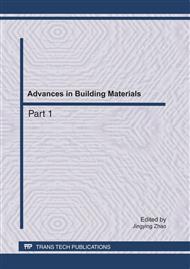p.1554
p.1559
p.1563
p.1567
p.1573
p.1578
p.1584
p.1589
p.1594
Analysis into How to Determine the Spring Constant of Groundwork in Design of Underground Structure
Abstract:
Based on the Winkler's hypothesis, this paper discusses how to determine the spring constant of groundwork in design of underground structure. When no sufficient experimental conditions are available, the method of numerical calculation can be used to determine the value of spring constant of groundwork. The resulted value is basically the same as the value of experience from the engineering criterion.
Info:
Periodical:
Pages:
1573-1577
Citation:
Online since:
May 2011
Authors:
Price:
Сopyright:
© 2011 Trans Tech Publications Ltd. All Rights Reserved
Share:
Citation:


